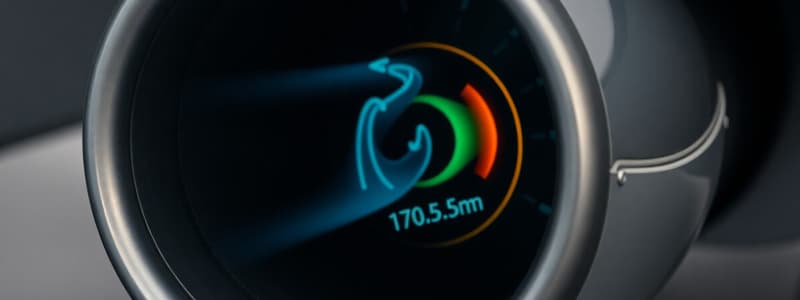Podcast
Questions and Answers
What does Exhaust Gas Temperature (EGT) help a pilot determine during cruising flight?
What does Exhaust Gas Temperature (EGT) help a pilot determine during cruising flight?
- The ideal altitude for takeoff
- The most economical fuel-air mixture (correct)
- The engine power output
- The total amount of fuel onboard
What should be done if the leads to the EGT gauge are defective?
What should be done if the leads to the EGT gauge are defective?
- They can be repaired with insulation tape
- They should be replaced with any type of wire
- They must be ignored if the gauge is still functioning
- They should be replaced with the same type and length of wire (correct)
What is critical for the EGT gauge/display's proper operation?
What is critical for the EGT gauge/display's proper operation?
- The color coding of the wires
- The age of the gauge
- The length of the exhaust pipe
- The resistance of the leads (correct)
What type of EGT probe is mentioned in the description?
What type of EGT probe is mentioned in the description?
What happens if the EGT leads are replaced incorrectly?
What happens if the EGT leads are replaced incorrectly?
Flashcards are hidden until you start studying
Study Notes
Exhaust Gas Temperature (EGT)
- EGT helps pilots determine the most fuel-efficient fuel-air mixture for cruising at 75% power or less.
- EGT is a sensor that monitors the fuel-air mixture exiting the engine cylinders.
- Defective leads to the gauge/display must be replaced.
- When replacing leads, ensure the same type and length of wire is used because lead resistance is crucial for gauge/display accuracy.
- The EGT probe is a clamp-mounted type adjusted for proper depth into the exhaust stream.
Studying That Suits You
Use AI to generate personalized quizzes and flashcards to suit your learning preferences.




